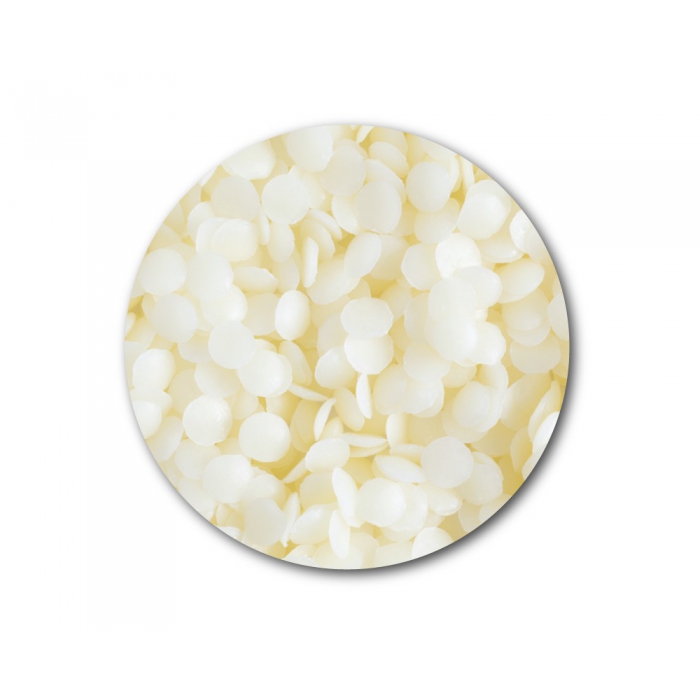



Natural white beeswax is produced from refined yellow wax (Cera flava). It is rich in carotenoids and non-saturated fatty acids. Additionally, it has slightly emulsifying properties. The cream with beeswax is harder, more adhesive, adherent and dense, therefore, it is a better additive to cosmetic products than any other. It shows smoothing properties. It oils the skin and creates a protective film on its surface.
INCI: Cera Alba
Natural white beeswax is produced from refined yellow wax (Cera flava). It is rich in carotenoids and non-saturated fatty acids. Additionally, it has slightly emulsifying properties. The cream with beeswax is harder, more adhesive, adherent and dense, therefore, it is a better additive to cosmetic products than any other. It shows smoothing properties. It oils the skin and creates a protective film on its surface.
Beeswax plays an important role in cosmetics because it prevents skin from drying and contains strong nourishing substances which have oiling and protective properties. It makes skin more elastic and soft and keeps water inside the epidermis. Beeswax is used as an ingredient in creams, ointments, soaps, balms, lip balms, foundations and more.
Creams and balms with beeswax may be applied easier and leave a protective film on the skin surface. Beeswax is also used in production of wax strips. When used in hair care, it delivers great, astonishing glow. It helps to define the shape of locks and waves and to smooth splitting endings.
Whitened beeswax is colourless and odourless.
| Use | In cosmetics: face and body creams, balms, lip glosses, lip balms, foundations. |
| Recommended concentration |
In colour cosmetics up to 20%. In emulsions and creams recommended 4%. |
| Storage | In room temperature. |
| Solubility | In fats. Melting point is 61–65ºC |
| Expiring date |
Given on the label |